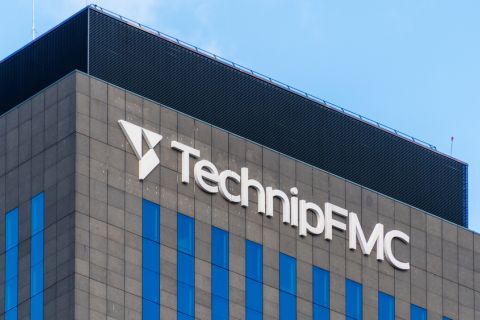As seen in recent months, mergers and acquisition (M&A) activities are heating up in the midstream energy space. And more deals for buying and selling gathering assets, pipeline master limited partnerships and gas-processing facilities are on the way.
So it's no surprise that corporate and private mergers and acquisitions are an inevitable part of doing business in today's marketplace, particularly in the highly dynamic world of energy. Ultimately, the success of M&A initiatives depends on how well they are managed and implemented.
Activities can get especially complicated for human resource (HR) departments, because these organizations are responsible for a number of areas that are directly affected by the M&A process—including payroll, employment policies, severance packages and benefits.
Recently, Hunt Consolidated Inc., based in Dallas, completed a small acquisition through one of its affiliates. The process helped its HR department develop a solid roadmap for future and larger M&A endeavors.
Hunt Consolidated is a holding company for the oil and real estate businesses of Ray Hunt, son of legendary Texas wildcatter and company founder H.L. Hunt. Founded in 1934 (reportedly with H.L.'s poker winnings), Hunt Oil is an oil and gas production and exploration company with primary interests in North and South America. Also, the company manages commercial and residential real estate, ranching and private-equity investments, and has refining and electric-generation interests.
Hunt discovered that, regardless of the size of the deal, there are several key activities that require close attention, including communication, due diligence and transition-to-close processes.
Communication
Clear communication with employees during the acquisition process is perhaps the No. 1 requirement for a smooth transition. Management should communicate details of the process early, often and consistently, so personnel on both sides of the deal understand how their job responsibilities, compensation, benefits and the organizational structure as a whole will be affected.
Also, managers should be sure to highlight the advantages of the actions and the positive results anticipated for the organization. Senior leadership in particular should be involved in generating excitement and engagement, as they are the face behind the company vision and strategy.
Communication is not one-sided, so employees should have a voice in the process. For example, Hunt solicited questions from employees as soon as its acquisition began to take shape, giving them a forum to express concerns about issues that may not have been addressed, and a stake in how decisions would be made. As a result, management learned that it is helpful to keep communicating even when there is no news. Periods of inactivity can cause anxiety among employees, which could have been easily alleviated with a simple message stating that things were moving along as planned.
Due diligence
Aggressive due diligence from day one is critical to the success of any merger or acquisition, and the human resources team has a very important role to play in this regard. Detailed intelligence about the selling company's workforce can have a big impact on the valuation of a deal.
Specifically, understanding as much as possible about existing severance agreements, staff performance, turnover and other matters is especially useful in determining the purchase price. HR stakeholders from the purchasing company should ask for a lot of information, even if it risks offending the seller. This includes any and all data related to employees that could be leveraged to identify costly trouble spots or areas of risk.
If the selling company's HR people are reluctant to provide it, explain the rationale behind data requests and ask again. There may be a reason they don't want their "warts" uncovered. If information is still missing after all attempts to get it, make sure that the senior leadership that is valuing the deal is aware of the blind spots and comfortable moving forward without pressing further.
During one of its past due diligence efforts, Hunt's HR department asked for specific personnel information that the selling company was reluctant to provide. It was soon discovered that the organization's severance agreements stated that if certain conditions relative to this data were achieved, more severance benefits would be triggered. The event could have become a very expensive surprise, had Hunt not questioned the company's hesitation to provide the data.
Timing and data
The timing of an M&A deal is an important consideration when it comes to HR matters. Hunt made a strategic decision, due to the timing of its close, not to merge any HR benefits, time reporting and payroll systems and processes until the start of the next year. This minimized disruption for employees, reduced cutover risks at close, and enabled its employees to focus on the issues most critical for a seamless transition.
Additionally, a transition timeline can serve as a helpful guide for keeping track of all the many HR activities that need to be completed up to and beyond close.
There are a multitude of data points that impact HR decision-making in just about every type of organization. Keeping track and analyzing all of the information during "business as usual" is complicated enough. During M&A activities, gaining a holistic and complete view of HR data is extremely complex, yet absolutely essential.
Technology tools can help users capture, visualize and analyze this data, and prove to be especially helpful during M&A processes—from due diligence, through transition-to-close and post-close activities.
Hunt used Sausalito, California-based Human Concept's OrgPlus Enterprise Blueprint software to model and analyze the changes that would be incorporated into its organizational structure as a result of its acquisition. It imported employee data from the acquisition target into the software, then created and analyzed different organizational scenarios, or "views," that helped identify optimal configurations and pinpoint areas where there could be potential overlap or problems.
For example, Hunt looked at a compensation view that showed the overall cost, average cost, headcount and span of control of different organizational scenarios at every level of the company. Color-coding helped see when a particular scenario didn't match specific cost thresholds. A workforce-planning view showed and color-coded individual data such as current age, years of pension credit and years to retirement.
These and other performance related views were critical to help plan the transition, and gave a good perspective of what type of workforce issues that Hunt was acquiring. Doing these analyses manually simply wouldn't have been time or cost-efficient.
When it comes to M&A activities, human resources experts have an important role to play. With the right communications, due diligence, planning and technology strategy, HR can add great value to the process—developing critical workforce insight that can drive better and smarter decisions.
Recommended Reading
Spate of New Contracts Boosts TechnipFMC's Subsea Profits
2024-04-30 - TechnipFMC's operational profits are growing as the company heightened its focus on “quality” subsea orders, which earned $2.4 billion for the first quarter.
Message in a Bottle: Tracing Production from Zone to Wellhead
2024-04-30 - New tracers by RESMAN Energy Technology enable measurement while a well is still producing.
Defeating the ‘Four Horsemen’ of Flow Assurance
2024-04-18 - Service companies combine processes and techniques to mitigate the impact of paraffin, asphaltenes, hydrates and scale on production—and keep the cash flowing.
Tech Trends: AI Increasing Data Center Demand for Energy
2024-04-16 - In this month’s Tech Trends, new technologies equipped with artificial intelligence take the forefront, as they assist with safety and seismic fault detection. Also, independent contractor Stena Drilling begins upgrades for their Evolution drillship.
AVEVA: Immersive Tech, Augmented Reality and What’s New in the Cloud
2024-04-15 - Rob McGreevy, AVEVA’s chief product officer, talks about technology advancements that give employees on the job training without any of the risks.





